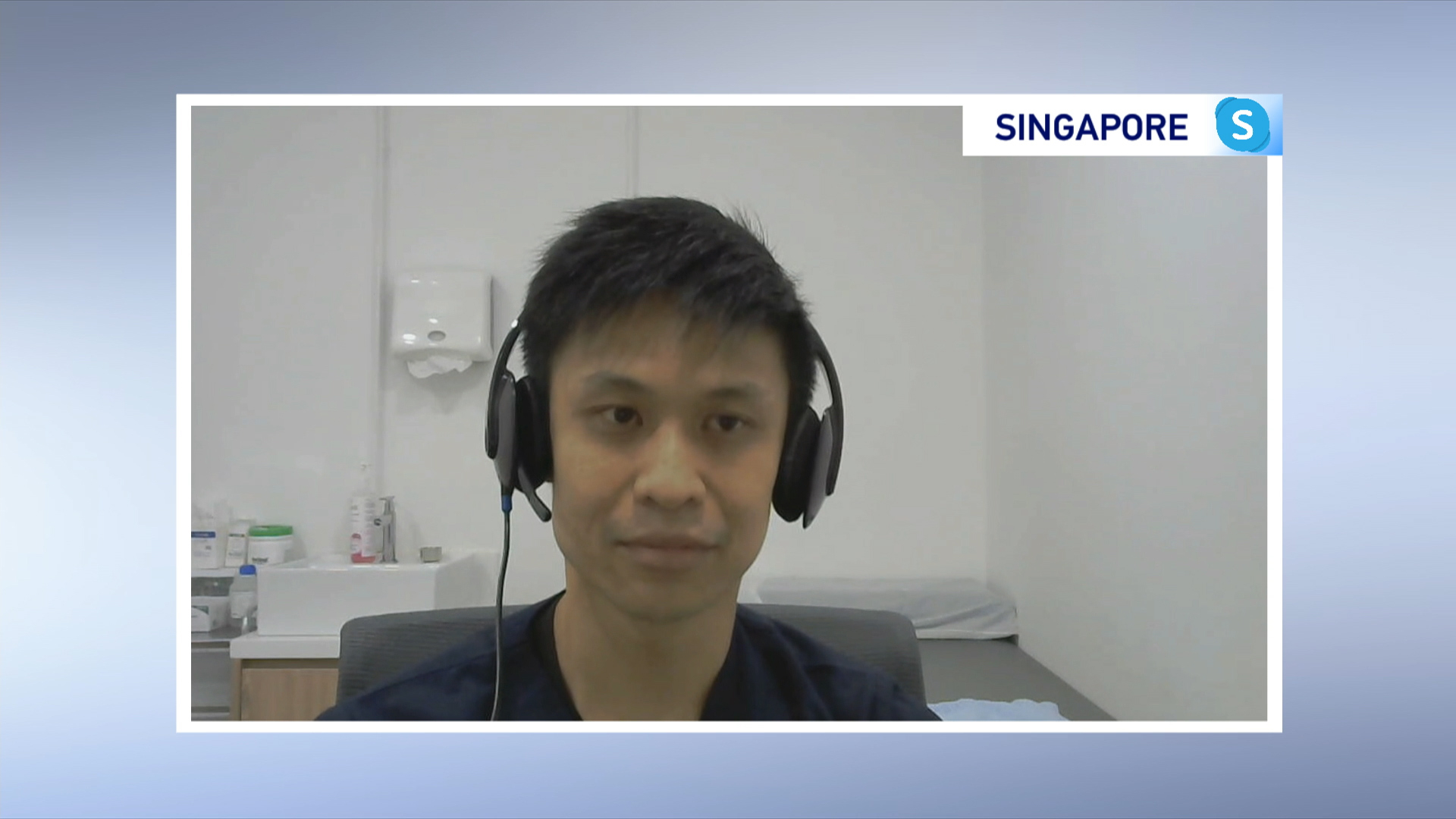No matter which country in Europe you live in, you will at least once have had the experience of waiting for hours in a crowded waiting room before visiting a doctor.
The whole process of getting a doctor's appointment can be so lengthy and tedious that a constantly increasing number of people every day rely on the internet to self-diagnose before seeing a physician.
But what if talking to your doctor could be as easy as opening Google on your phone?
02:18

'I'm the online doctor: What are your symptoms today?'
Telemedicine or telehealth – the provision of healthcare services in situations in which the health professional and the patient are not in the same location – is one of the biggest trends in Europe. It feeds into the larger sector of eHealth, which concerns the use of communications technology for well-being.
It's a growing area with a constantly increasing demand that, as a market study on telemedicine conducted by the European Commission reports, outpaces supply in Europe.
There are many benefits from using telehealth services. Patients who are homebound (including the chronically ill or the elderly), can't take time off work, or live in remote locations are able to get access to healthcare services without going to a surgery.
"You're able to see a doctor in the comfort of your own home," says Kevin Kok, chief operating officer at Doctor Anywhere, a healthtech company based in Singapore that provides video consultations online.
"You can also get medications delivered to you without having to leave your home, so you actually save time and efforts from traveling to see the doctor."
But seeing your doctor online could also be a most effective way to avoid the spread of contagion. A GP surgery in Brighton, UK, was recently closed over fear of COVID-19 contagion after staff members tested positive for the virus.
"A lot of times in a clinic the queue can be very long and people there may be sick, so you don't want to get cross-contaminated with other illnesses."
But is it safe to diagnose patients online? According to Kok, the limitation of not being able to examine the patient in person is not an immediate problem.
"Over the video consultation, the doctor is trained to assess whether the patient can be treated online. If not, they will refer you to the nearest doctor or if more serious to an emergency department," says Kok.
There are also potential disadvantages to virtual medical consultations, including a lack of personal, human connection between patients and doctors.
The main obstacle to a fully functional telehealth service is the infrastructure available, which is not equally up to the task everywhere in the world and tends to leave out those excluded from internet access.

"I believe that healthcare can be delivered in a more efficient manner, and telehealth can definitely connect patients to healthcare service providers more efficiently," says a statement from Kok on his company's website.
"I believe that healthcare can be delivered in a more efficient manner, and telehealth can definitely connect patients to healthcare service providers more efficiently," says a statement from Kok on his company's website.
Why you are unlikely to Skype your doctor in Europe: Cultural, regulatory, technical and financial barriers
With an aging population putting pressure on health budgets and a shortage of health professionals in Europe, the European Commission is betting on digital technologies to transform Europe's healthcare system and meet the growing public demand for more accessible healthcare.
Germany and the UK are the European leaders in providing virtual medical services, and France is the first country that drew up a public funding plan for tele-expertise across the nation. But despite these achievements and the Commission's efforts and long-term goals, Europe is still behind other countries such as the U.S. for telehealth providing, and communicating with a health professional online is still rare in many European countries.
The obstacles to a broader availability of telemedicine are different and vary from country to country, but they can be traced back to cultural barriers, the lack of a clear regulation around telehealth, limited fundings and little financial incentives.
Many in Europe are resistant to adopting new medical practices, while the hospitals and clinics that have already adopted telemedicine initiatives sometimes don't receive sufficient financial support to properly implement them and guarantee an efficient service.
What does the future hold for telehealth?
Telehealth is definitely a growing sector, driven by patients' demand for easier access to consultation. In times of global health emergencies, such as the coronavirus outbreak, telehealth offers a solution to avoid risky exposure and the spread of the contagion.
But if patients and doctors are willing to get on board, the technology must be fit for purpose. Kok is optimistic about the future technological innovations.
"I think in the future, as 5G comes about as well, remote monitoring and diagnosis will start to play a major part in teleconsultation," says Kok.
"For example, with 5G you are able to operate more IOT devices and get more extra information, whereby you can even improve the diagnostic capabilities of a doctor online."
With more technological innovations coming about, virtual medical care centers could soon be the first point of reference for patients around the world.